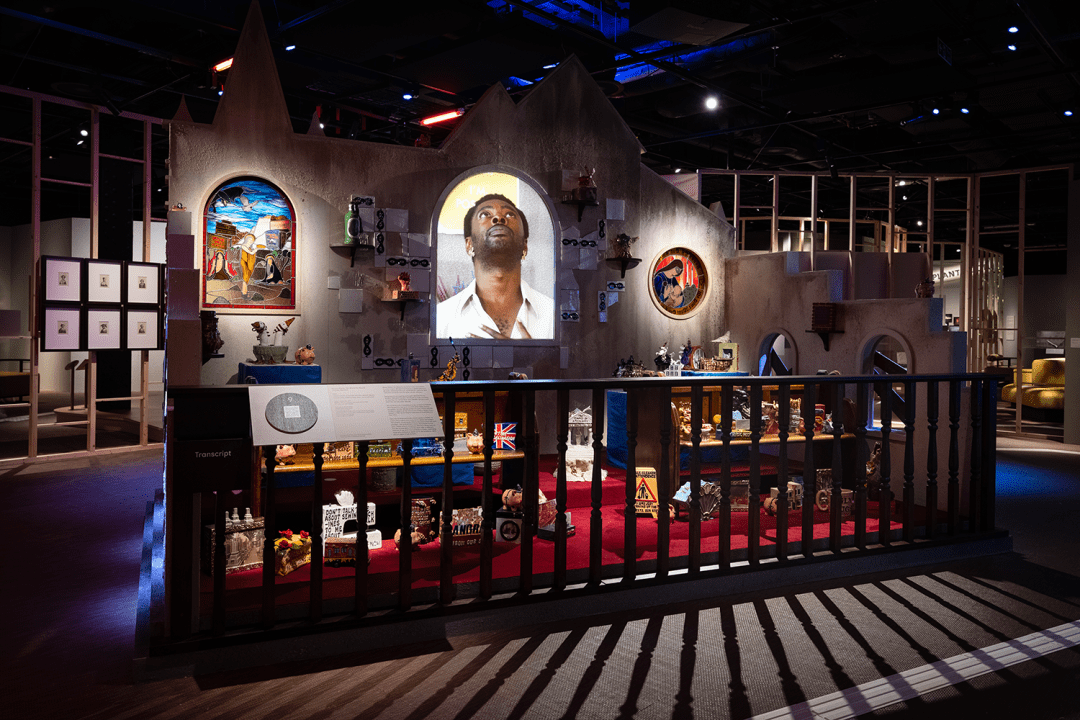In 2022 the Wellcome Collection caused a stir by closing its Medicine Man exhibition on the grounds that it was ‘based on racist, sexist and ableist theories and language’. Director Melanie Keen had previously talked of reinterpreting the collection but had now evidently decided it was beyond redemption. ‘We can’t change our past,’ she said in a statement at the time. ‘But we can work towards a future where we give voice to the narratives and lived experiences of those who have been silenced, erased and ignored.’
I felt sorry for Sir Henry Wellcome, now dismissed by the organisation bearing his name as an evil colonialist
Anyone who wasn’t quite sure what that meant now has a chance to find out, in the shape of an exhibition entitled Hard Graft: Work, Health and Rights, which invites us to ‘explore the profound impact of physical work on health and the body’.
That sounds a strong and original, if stomach-turning, theme – it raises expectations of learning about industrial diseases and, say, the poor condition of northern mill workers which so shocked recruitment officers during the Great War.
But sadly this exhibition does not live up to its billing. This is not a learned exhibition of the sort that you might expect from the Wellcome Collection, and that it has held in the past. It is, rather, an exhibition of multimedia art. A typical offering is a ‘sermon’ delivered in televisual form by a rent boy (dressed up as a priest and set before a faux altar) who reveals – spoiler alert – that his first client admitted to having Aids.
Slaves, we are told, developed their own herbal medicine, which would be interesting to know a little more about, but the context here is that it shouldn’t be seen in any way as inferior to western medicine – an assertion which today’s cancer survivors might want to question.
An exhibit about ‘environmental racism’, which asserted that the poor, black population of the American south suffers the most from pollution – in the US’s ‘petrochemical corridor’ – wasn’t working, so I never did quite find out what that was supposed to be about, but I guess the evil fossil-fuel industry had to come into the story somehow.
I did learn one thing, though. The US Prison Service is a big player in the office furniture market – that being a speciality of UNICOR, the Federal Prisons Industries programme. American government departments are apparently under obligation to buy a proportion of their furniture from this source. Needless to say, in the hands of this exhibition, that interesting fact comes with a bit of spin: the exhibit in question intersperses photographs of humdrum office chairs and tables with gnomic offerings such as ‘What is the difference between factory work, prison work and slavery?’.
If we are supposed to be shocked by the idea that prisoners are put to work manufacturing seats for Washington bums to sit on I am afraid my reaction was somewhat different: isn’t it a good thing that prisoners are doing something constructive with their time? It teaches them skills and keeps them in the habit of paid work – even if their wages are token offerings for the prison tuck shop. But no, it is apparently all part of the ‘Prison-Industrial Complex’, the title of the piece.
We have become used to UK arts institutions being captured by fashionable dogma and trashing their own history. Sadly, the Wellcome Collection seems to be taking this to extremes. I am sure that the labourers, prostitutes and slaves who feature in this exhibition had a tough time, but the person I felt most sorry for as I walked out on to Euston Road was poor Sir Henry Wellcome, whose philanthropy still funds important medical research but who is now dismissed by the organisation which bears his name as an evil colonialist whose business ‘benefitted greatly from Indigenous medical knowledge and from imperial polices and trading relationships that subjugated and exploited Indigenous peoples’.
If he could see how the Wellcome Collection now treats him he could be forgiven for wishing he had frittered his money on women and cigars instead.









Comments